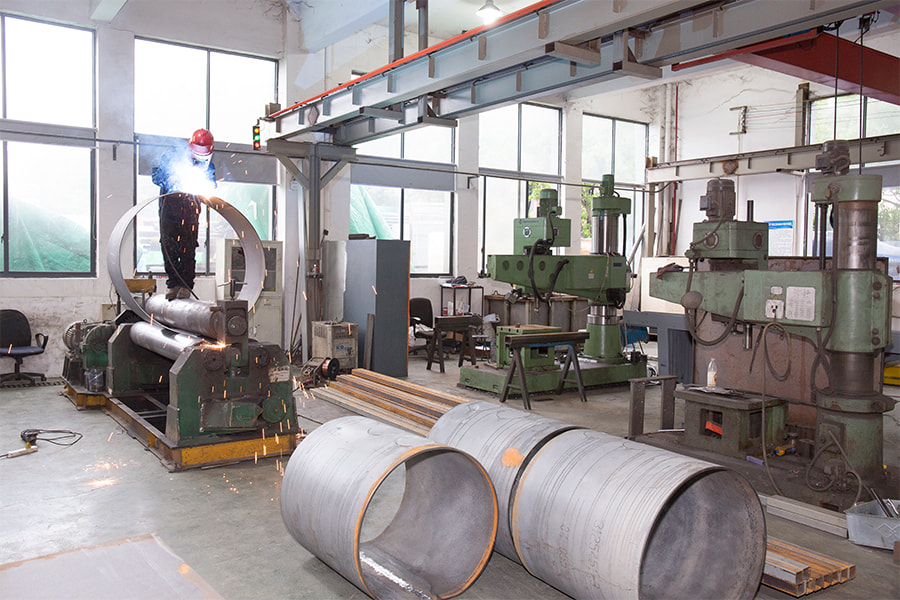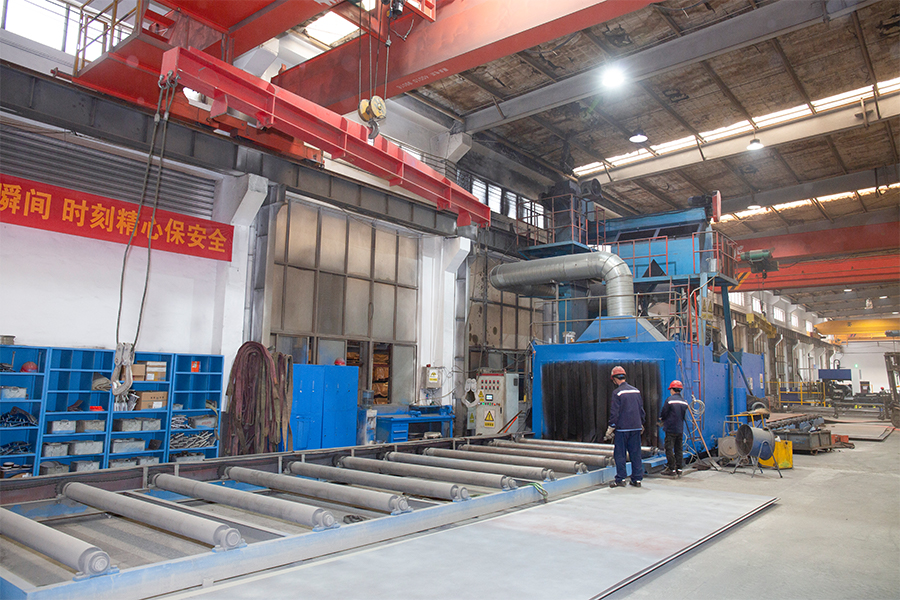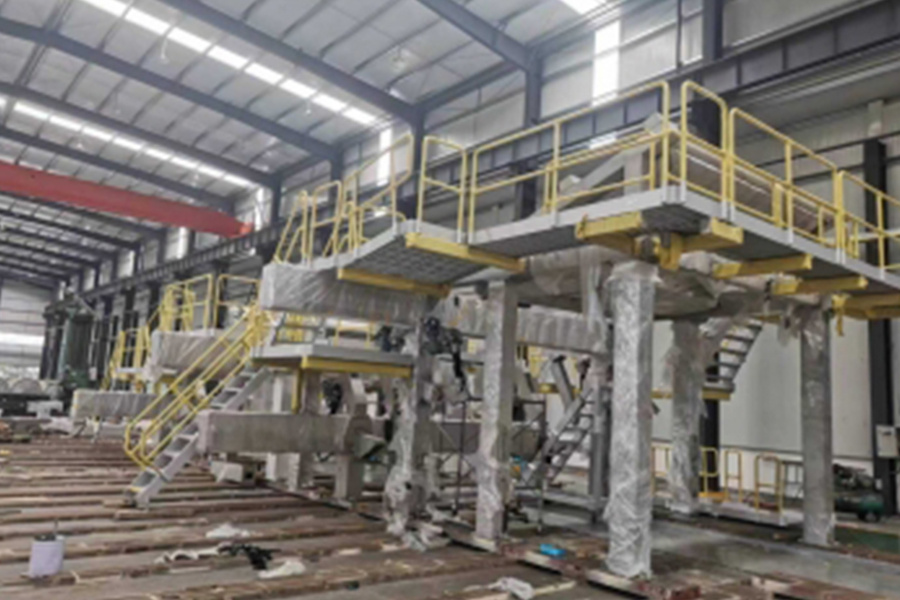No.158, Baoqun Road, Yaozhuang Town, Jiashan County, Jiaxing City, Zhejiang Province , China

Equipment steel structure welding OEM refers to a cooperation model in which an enterprise specializing in steel structure welding processing produces steel structure components or overall structures of specific equipment for customers according to the design drawings, technical parameters and quality standards provided by customers. These steel structures are usually used as the core load-bearing frame, supporting structure or functional component of terminal equipment, and are widely used in industrial fields such as engineering machinery, mining equipment, pressure vessels, and environmental protection equipment. Equipment steel structure welding OEM has professional welding process capabilities, precise processing equipment and a complete quality control system. It can handle welding tasks of various materials such as carbon steel, stainless steel, and alloy steel, covering arc welding, submerged arc welding, gas shielded welding, resistance welding and other welding processes. Its service scope ranges from raw material cutting, forming, welding to subsequent integrated processing such as heat treatment and surface treatment, and finally provides customers with finished or semi-finished steel structure parts that meet assembly requirements.
In the modern industrial manufacturing system, equipment steel structure welding OEM plays an indispensable role. Its core value is to build a bridge for efficient collaboration between upstream and downstream of the industrial chain, while promoting the deepening of the industry's professional division of labor.
Reduce customer production costs: Customers do not need to invest a lot of money to build welding workshops, purchase equipment and cultivate professional technical teams. Through cooperation, fixed costs can be converted into variable costs, greatly reducing initial investment and operating risks.
Improve production efficiency: equipment steel structure welding OEM focuses on the field of steel structure welding, accumulates rich process experience and production management capabilities, and can shorten product delivery cycles and improve production efficiency through standardized processes, automated equipment and batch production advantages.
Ensure product quality stability: Professional equipment steel structure welding OEM has complete quality testing equipment and a strict quality control system to ensure that key indicators such as strength, sealing, and dimensional accuracy of welded parts meet design requirements and reduce rework and losses caused by quality problems.
Equipment steel structure welding OEM is in the middle of the industrial manufacturing industry chain, connecting with steel enterprises, welding material suppliers and equipment manufacturers upstream, and serving terminal manufacturing enterprises such as engineering machinery, mining machinery, petrochemical equipment, and new energy equipment downstream. As a professional processing service provider, it is the key link between raw material supply and terminal product manufacturing, helping downstream enterprises focus on core technology research and development and complete machine assembly, and promoting the optimal allocation of industry resources.
With professional technical capabilities and a complete production system, equipment steel structure welding OEM can provide comprehensive services covering a variety of equipment types and processing links to meet the diverse needs of customers in different industries.
Engineering machinery steel structure: including the boom and dipper of the excavator, the boom and frame of the crane, the bucket and front frame of the loader and other load-bearing structural parts. These parts need to withstand huge loads and impacts, and have extremely high requirements for welding strength and fatigue performance. High-strength low-alloy steel is usually used for welding, and non-destructive testing is required to ensure the welding quality.
Mining equipment steel structure: covers the frame of the crusher, the cylinder of the ball mill, the tank body and bracket of the mineral processing equipment. The working environment of mining equipment is harsh, and steel structures are often exposed to dust, corrosive media and vibration. Therefore, they need to have good wear resistance, corrosion resistance and structural rigidity. The welding deformation needs to be controlled during the welding process to ensure the stability of the equipment operation.
Pressure vessel related steel structure: including the cylinder, head, flange connection parts of the pressure vessel, and the support structure of the pressure pipeline. This type of product is directly related to production safety and must strictly follow the standards. The welding process requires preheating before welding, heat treatment after welding, and passing the water pressure test, air tightness test and other testing links.
Environmental protection equipment steel structure: such as the box and bracket of sewage treatment equipment, the shell of the exhaust gas treatment tower, and the pipe connection parts. Environmental protection equipment has high requirements for the sealing of the structure to prevent the leakage of pollutants. The density of the weld must be ensured during welding, and some parts must also be treated with anti-corrosion coating.
Raw material processing: including steel plate cutting, steel cutting, bending, stamping, etc., to provide blanks that meet the size requirements for the welding process. Equipment steel structure welding OEM is usually equipped with high-precision cutting equipment, such as CNC laser cutting machines, which can achieve precise cutting of complex-shaped parts and control dimensional errors.
Welding processing: According to the product structure and material, select the appropriate welding process (arc welding, submerged arc welding, gas shielded welding, etc.) for welding and forming. For large and complex structural parts, a reasonable welding sequence needs to be formulated to reduce welding deformation, and the workpiece should be fixed by fixtures to ensure welding accuracy.
Subsequent treatment: including post-welding correction, heat treatment, surface treatment (sandblasting, rust removal, painting, galvanizing), etc., to improve product performance and service life.
The quality of equipment steel structure welding directly affects the performance and safety of terminal equipment. Therefore, OEM companies need to master a series of key technologies to ensure the stability of the welding process and the reliability of the welding joints.
|
Key technology categories |
Specific content |
|
Welding process selection |
Arc welding: suitable for small batch production of single pieces or repair welding of complex structures. Submerged arc welding: suitable for long straight welds and large diameter circumferential welds of medium and thick plates. Gas shielded welding: suitable for welding thin plates and medium and thick plates. |
|
Welding deformation control technology |
Reasonable design of welding structure、 Optimize welding sequence、 Use fixtures、 Correction after welding |
|
Welding quality inspection technology |
Appearance inspection: Check weld formation, size, excess height, undercut, etc. Non-destructive testing: Including ultrasonic testing, magnetic particle testing, penetration testing, X-ray testing, etc. Mechanical property testing: Through tensile testing, bending testing, impact testing, etc. |
Different steel structure materials, thicknesses and performance requirements need to match the corresponding welding processes:
Arc welding: Suitable for single-piece small-batch production or repair welding of complex structures. It has high flexibility and can use welding rods to weld low-carbon steel and low-alloy steel. However, the efficiency is low and the quality of the weld is greatly affected by the skills of the operator.
Submerged arc welding: Suitable for long straight welds and large-diameter circumferential welds of medium and thick plates, such as the longitudinal and circumferential welds of pressure vessel cylinders. It has large welding current, deep penetration, high production efficiency, beautiful weld formation, and no arc and smoke pollution during the welding process, which is suitable for automated production.
Gas shielded welding: Gas shielded welding is suitable for the welding of thin plates and medium and thick plates. It has fast welding speed and high weld strength. It is mainly used in automobile manufacturing, engineering machinery and other fields. Argon-rich gas shielded welding can reduce spatter and improve weld quality. It is often used for welding stainless steel and high-strength steel.
During the welding process, due to uneven local heating and cooling, welding stress and deformation will occur, affecting the dimensional accuracy and assembly performance of the product. Equipment steel structure welding OEM usually adopts the following measures to control deformation:
Reasonable design of welding structure: reduce the number and length of welds, avoid concentrated distribution of welds, and adopt symmetrical structural design to offset welding deformation.
Develop an optimized welding sequence: For large structural parts, adopt segmented welding and symmetrical welding methods. For example, when welding the box structure, first weld the diagonal welds, and then weld the remaining welds to reduce overall deformation.
Use tooling and fixtures: rigidly fix the workpiece to limit welding deformation. When welding the frame, use special tooling to clamp the workpiece. After welding, wait for the temperature to cool to room temperature before removing the fixture.
Post-welding correction: For the deformation that has occurred, use flame correction or mechanical correction to repair it.
To ensure that the welded joints meet the quality requirements, equipment steel structure welding OEM needs to conduct multiple quality inspections:
Appearance inspection: Check the weld's shape, size, excess height, undercut, etc. to ensure that there are no obvious defects.
Nondestructive testing: Including ultrasonic testing, magnetic particle testing, penetration testing, radiographic testing, etc., used to detect cracks, pores, slag inclusions and other defects inside the weld.
Mechanical property testing: Through tensile testing, bending testing, impact testing, etc., the strength, plasticity and toughness of the welded joint are tested to ensure that the design requirements are met.
Advanced production equipment and perfect production facilities are the basis for equipment steel structure welding OME enterprises to ensure production efficiency and product quality, and are also an important manifestation of their core competitiveness.
CNC plasma cutting machine: suitable for cutting medium and thick plates, with fast cutting speed, can cut carbon steel, stainless steel and other materials, with high dimensional accuracy.
Laser cutting machine: with the characteristics of high precision and high speed, suitable for cutting thin plates and parts with complex shapes, smooth incision, small heat-affected zone, mainly used for cutting precision parts.
CNC flame cutting machine: suitable for cutting thick plates, low cost, but relatively low cutting accuracy, large heat-affected zone, often used for rough cutting of large structural parts.
Welding robots: including articulated robots and gantry robots, which can be equipped with arc welding, submerged arc welding, gas shielded welding and other welding systems to realize automated welding. Robot welding has the characteristics of high repeatability and high stability, which can greatly improve welding quality and production efficiency, especially suitable for standardized parts in mass production.
Submerged arc welding machine: divided into semi-automatic submerged arc welding machine and automatic submerged arc welding machine. Automatic submerged arc welding machine is usually used in conjunction with welding roller frame and operating machine to realize automatic welding of annular workpieces such as cylinders and pipes.
Stud welding machine: used to weld studs, bolts and other fasteners on the surface of steel structures. It has high welding efficiency and high joint strength. It is widely used in automobiles, engineering machinery and other fields.
Hydraulic correction machine: Apply pressure through the hydraulic system to correct the deformed parts after welding. It can correct various workpieces such as steel plates and steel sections with high correction accuracy.
CNC machining center: used to machine the structural parts after welding to ensure the dimensional accuracy and matching requirements of the connection parts, such as machining bolt holes for steel structural parts to control the tolerance level.
Welding workshop: It is necessary to have good ventilation conditions and install a smoke exhaust system to reduce the harm of welding smoke to operators. The workshop floor should be flat and solid to facilitate the handling and storage of large workpieces. At the same time, different working areas should be divided to realize the orderly progress of the production process.
Storage facilities: including raw material warehouse and finished product warehouse. The raw material warehouse needs to store steel plates and steel sections of different materials and specifications in a classified manner, and should be treated with moisture and rust prevention. The finished product warehouse should reasonably plan the storage space according to the product type and customer needs to ensure that the products are not damaged during storage and transportation.
Testing laboratory: equipped with non-destructive testing equipment, mechanical properties testing machines, metallographic microscopes, etc., for quality inspection of welded parts to ensure that the products meet relevant standards and customer requirements.
Quality is the lifeline of equipment steel structure welding OME. Establishing a sound quality control system is the key to ensuring stable product quality, covering the entire process from raw material storage to finished product delivery.
Supplier management: Select raw material suppliers with complete qualifications and good reputation, and conduct annual audits on them to evaluate their production capacity, quality control level and supply stability. Establish long-term cooperative relationships with high-quality suppliers to ensure the quality consistency of raw materials.
Warehouse inspection: After the raw materials arrive, the inspectors need to check the material certificate, check the brand, specification, and appearance quality of the raw materials, and conduct sampling inspections according to regulations, such as chemical composition analysis and mechanical property tests on steel plates to ensure that the raw materials meet the design requirements. Only raw materials that have passed the inspection can be put into storage for use, and unqualified raw materials should be returned to the supplier in a timely manner.
Process document management: Develop detailed welding process instructions for each product, clarify key parameters such as welding methods, welding materials, welding parameters, preheating temperature, interlayer temperature, and post-heating temperature, and provide process training for operators to ensure strict implementation in accordance with process documents.
Process inspection: Set up quality control points in each link of welding production to conduct process inspection. For example, after the material is cut, check the size and shape of the workpiece; during welding, check whether the welding parameters meet the requirements and whether the weld appearance is qualified; after welding, correct the workpiece and check the dimensional accuracy after correction. Only after the previous process is inspected and qualified can the next process be entered.
Welding personnel management: Welding operators must hold corresponding welding qualification certificates and receive regular skill training and assessment to ensure that they are competent for the corresponding welding work. Record the welding performance of operators as a basis for performance evaluation.
Finished product inspection and factory control
Final inspection: After the finished product is completed, a comprehensive quality inspection is carried out, including appearance inspection, dimensional inspection, non-destructive testing, mechanical properties testing, etc. The specific inspection items are determined according to product standards and customer requirements. For the boom of engineering machinery, ultrasonic flaw detection and magnetic particle flaw detection are required to ensure that there are no fatal defects such as cracks inside the weld.
Identification and traceability: Mark the product number, batch number, production date and other information on the finished product, establish a product traceability system, and ensure that each product can be traced back to the raw material batch, production team, operator, inspector and other information. Once a quality problem is found, the cause can be quickly traced and corrective measures can be taken.
Factory audit: After the finished product is inspected and qualified, the quality department will conduct a factory audit. After the audit is passed, the product quality certificate will be issued before it can be shipped. The inspection records, quality reports and other materials of the product are sorted and archived for customer inquiries and subsequent quality traceability.
Equipment steel structure welding has extremely high requirements for precision and strength. As equipment steel structure welding OEM, DINGSHI usually has a mature welding process system, covering arc welding, submerged arc welding, laser welding and other types of welding technologies, which can match different materials and structural forms; strictly implement pre-welding pretreatment, process parameter monitoring and post-processing to ensure that the weld strength meets the standard.
Equipped with professional welding equipment, reduce manual operation errors and improve welding consistency; the team includes certified welders and welding engineers, which can cope with the welding scheme design of complex structures.
After choosing OEM cooperation, the project party does not need to invest energy in the detailed management of welding production, and can concentrate resources on the core links to enhance the overall competitiveness of the project.
If the project focuses on equipment development, assembly or terminal application, and welding processing is not a core competitive link, DINGSHI equipment steel structure welding OEM can become a project cost reduction, efficiency improvement and delivery guarantee with its comprehensive advantages of professional quality assurance, cost optimization, efficiency improvement and risk transfer. It is especially suitable for scenarios with high requirements for welding precision, tight project cycle or cost sensitivity.

Introduction What does One-stop service mean? One-stop service refers to a comprehens...
READ MORE
Introduction Assembly plays a fundamental role across multiple domains, serving as th...
READ MORE
How Precision Processes Like TIG Welding Deliver Superior Custom Parts from Aluminum ...
READ MORE
Why OEM High Technology Special Equipment Steel Structure Becomes a Core Component of...
READ MORE